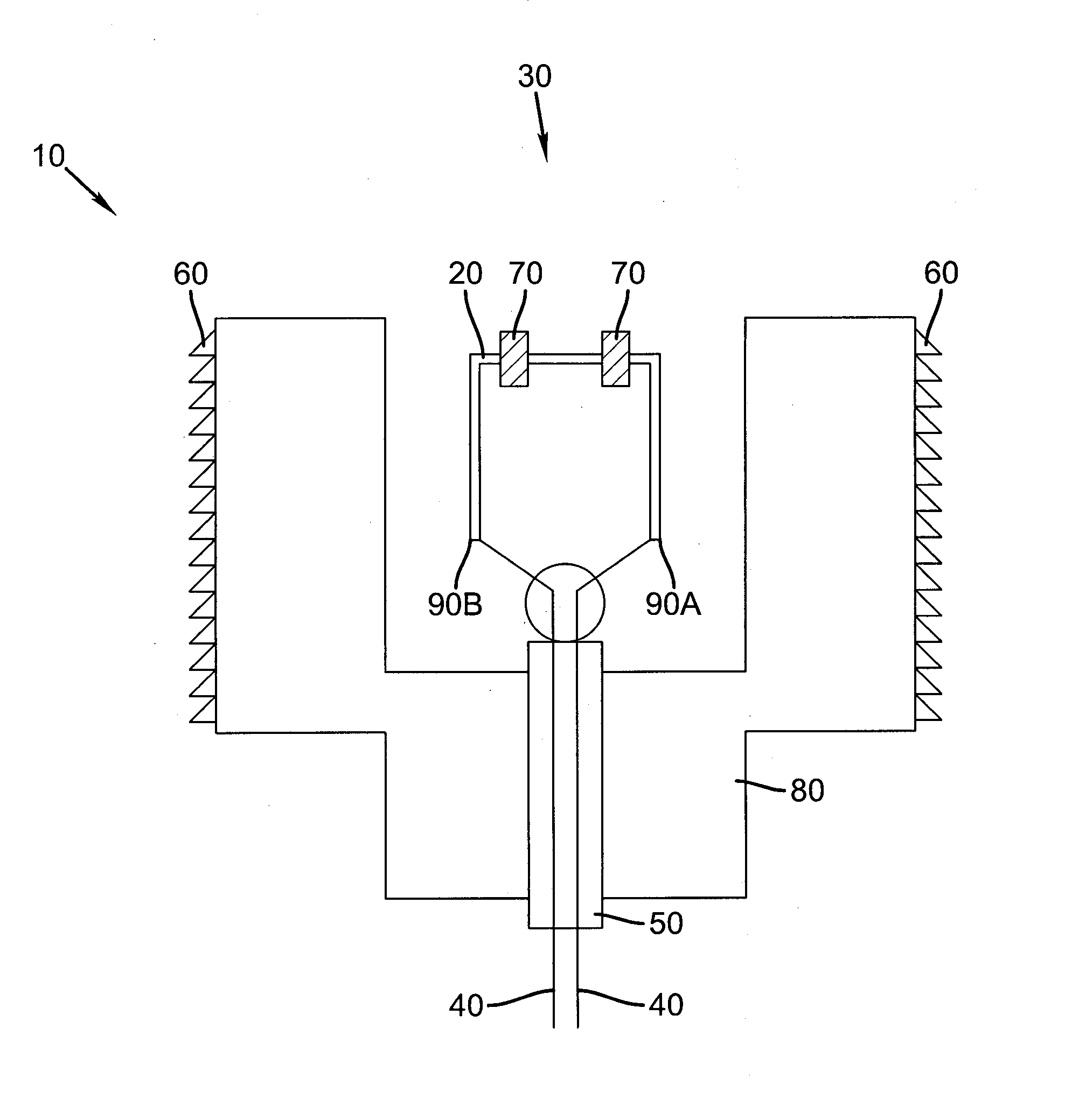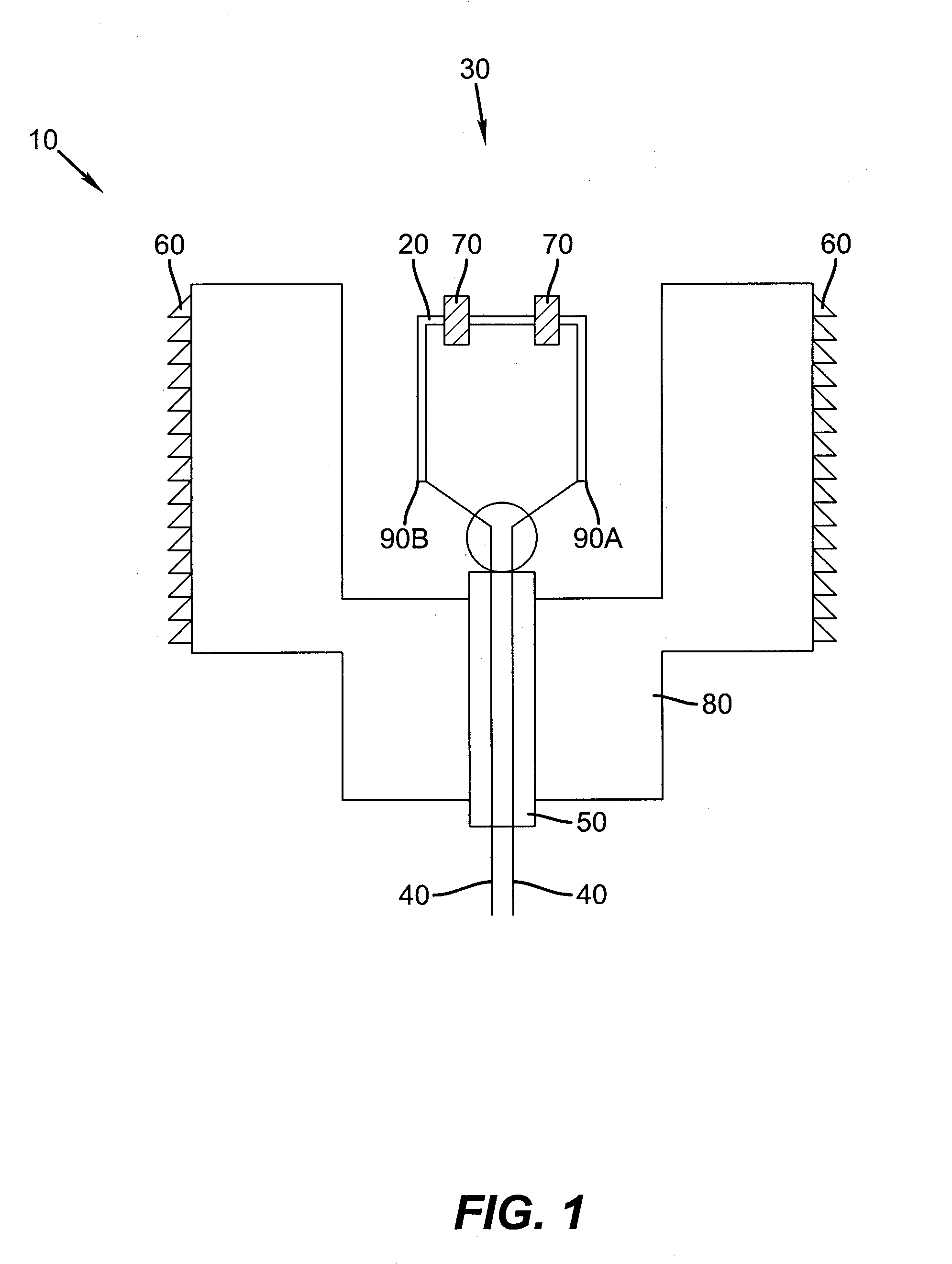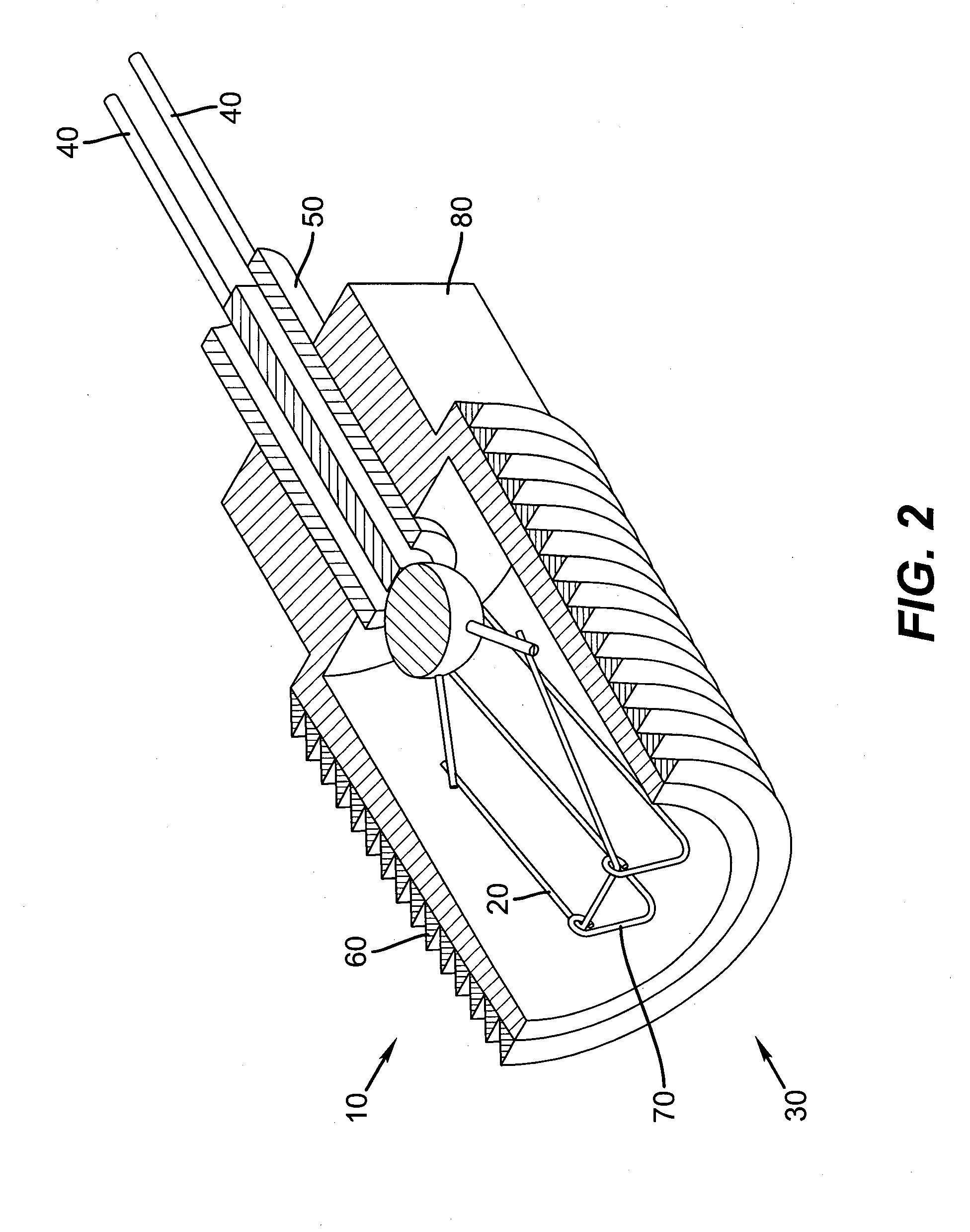Pressure gauge for organic materials
a pressure gauge and organic material technology, applied in the direction of resistance/reactance/impedence, instruments, measurement devices, etc., can solve the problems of accumulated film thickness information loss, affecting the accuracy of the pressure gauge, so as to reduce the risk of organic material degradation and achieve effective sensitivity
- Summary
- Abstract
- Description
- Claims
- Application Information
AI Technical Summary
Benefits of technology
Problems solved by technology
Method used
Image
Examples
Embodiment Construction
[0021]Turning now to FIG. 1, there is shown a cross-sectional view of one embodiment of one part of a vacuum gauge in accordance with this invention for measuring the pressure of vaporized organic material used in forming a layer of a device. Extended filament unit 10 is part of a vacuum gauge of the Pirani type and is designed to fit into a manifold. The unit includes an extended filament 20 in a dual-helix configuration, which will be described further below. The unit includes a housing 80 with a thread 60 that interfaces with the manifold to create a vacuum-tight seal that also acts to conduct heat from the manifold to the housing so that the manifold and housing are at essentially the same temperature. Opening 30 into the manifold permits the vacuum inside the manifold to contact filament 20 so that the filament is subject to the vaporized material inside the manifold. In one embodiment, the vaporized material inside the manifold is a vaporized organic material. Filament 20 is s...
PUM
 Login to View More
Login to View More Abstract
Description
Claims
Application Information
 Login to View More
Login to View More - R&D
- Intellectual Property
- Life Sciences
- Materials
- Tech Scout
- Unparalleled Data Quality
- Higher Quality Content
- 60% Fewer Hallucinations
Browse by: Latest US Patents, China's latest patents, Technical Efficacy Thesaurus, Application Domain, Technology Topic, Popular Technical Reports.
© 2025 PatSnap. All rights reserved.Legal|Privacy policy|Modern Slavery Act Transparency Statement|Sitemap|About US| Contact US: help@patsnap.com



